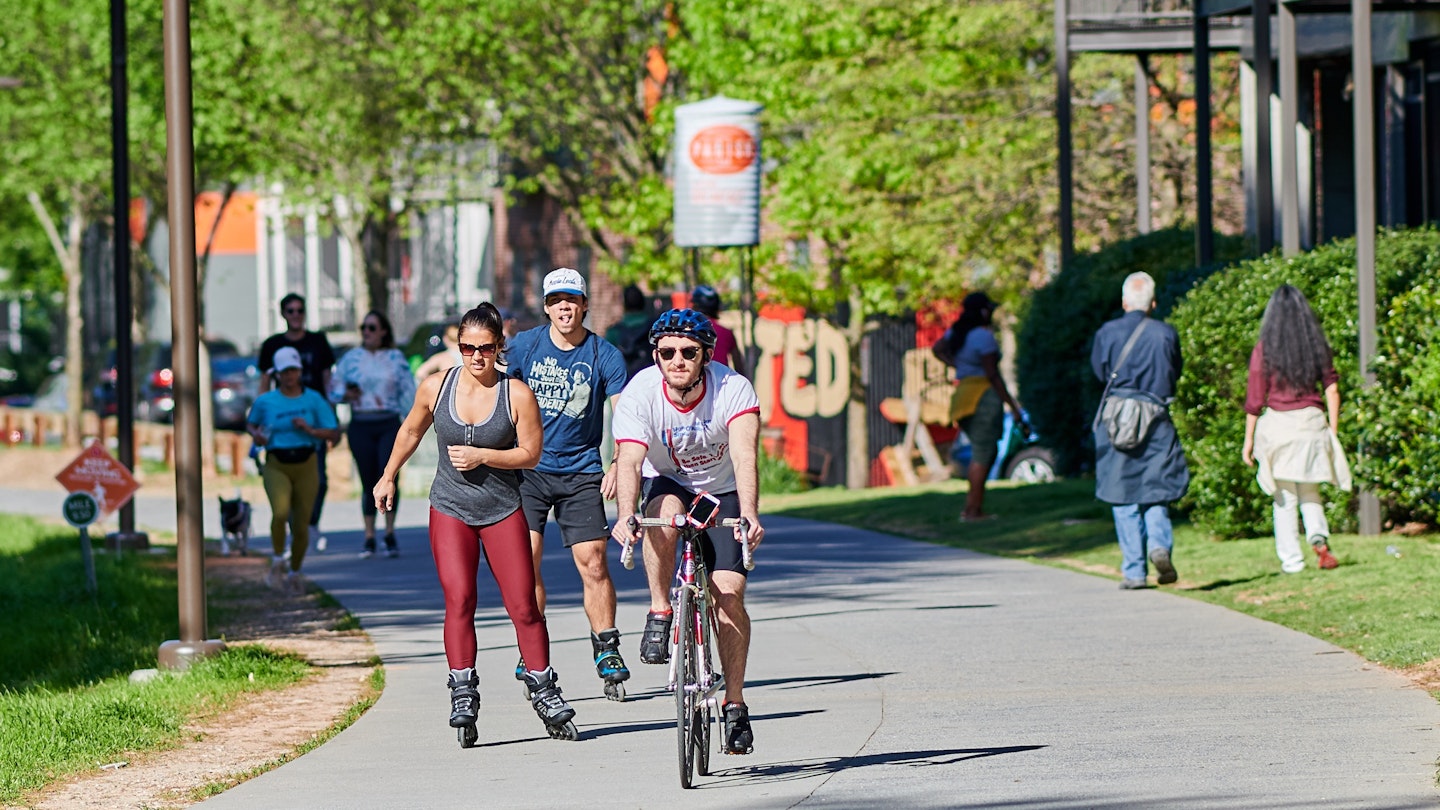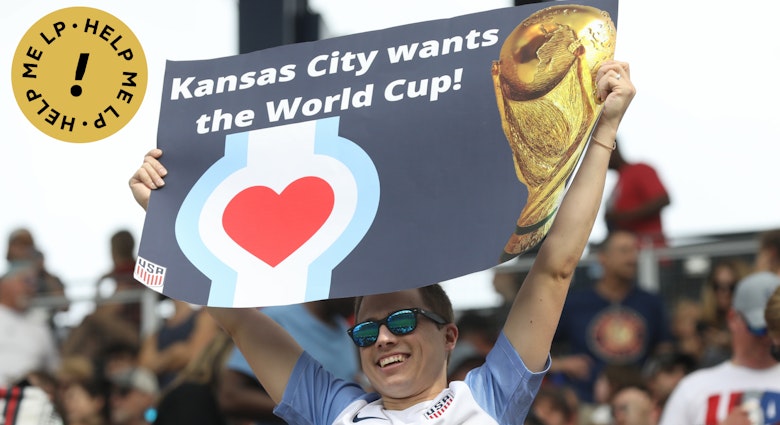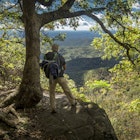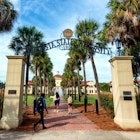Without natural boundaries to control development, it's fair to say Atlanta is more of a region than a city. Yet for all its sprawl and suburbanization, there is a lovely urban core covered with trees – some 48% of the city to be exact – making it one of the most densely forested cities in the US.
Magnificent oaks, Southern pines, dogwoods and magnolias pepper the nation's ninth-largest metro area, a refuge for 343 parks, nature preserves, gardens and public spaces. Among the green is the ongoing Atlanta BeltLine, transforming the city's urban core and cutting a cinematic path through the canopy. Here are some of the best parks Atlanta has to offer.
Follow the Atlanta BeltLine across the city
The city's largest greenway and the most comprehensive transportation and economic development effort ever undertaken in Atlanta, this former railway corridor now cuts a green path through Georgia's capital. It currently counts about 16 miles among its active trails – Eastside Trail, Westside Trail, Northside Trail, Northeast Trail, Southwest Connector Spur Trail, Southside Trail, Westside BeltLine Connector Trail and West End Trail.
Strolling or bicycling the Atlanta BeltLine's Eastside Trail makes for a perfect outing morning, noon or night. Connecting Piedmont Park in Midtown with the hip and happening neighborhood of Inman Park, this 3-mile section of the multi-use trail links big attractions such as the Atlanta Botanical Garden with some of Atlanta's coolest markets, bars, restaurants and breweries and most interesting urban parks. The visitors' center has info and trail maps, as well as exhibits and interactive displays highlighting the parks, trails, events, activities, art and history of the BeltLine.
The BeltLine is home to the largest public temporary outdoor art exhibition in the South (Art on the Atlanta BeltLine) and has generated roughly $8 billion in economic development for an investment of $670 million. To help mitigate concerns over rising property values, particularly in urban neighborhoods (it will eventually connect some 45 communities), the BeltLine is bound by law to help create 5600 affordable housing units.
In addition to trails and transit, it has built or incorporated seven city parks, with an eventual goal of more than 1000 acres of green space. The project, spawned from a 1999 master's thesis by then–Georgia Tech student Ryan Gravel, opened its first trail in 2008 and is set for completion by the end of 2030.
In 2021, approximately 2.5 million people traversed the BeltLine, and a whole lot more have seen bits and pieces of it – Stranger Things, Walking Dead and the Hunger Games series have all filmed along the greenway.
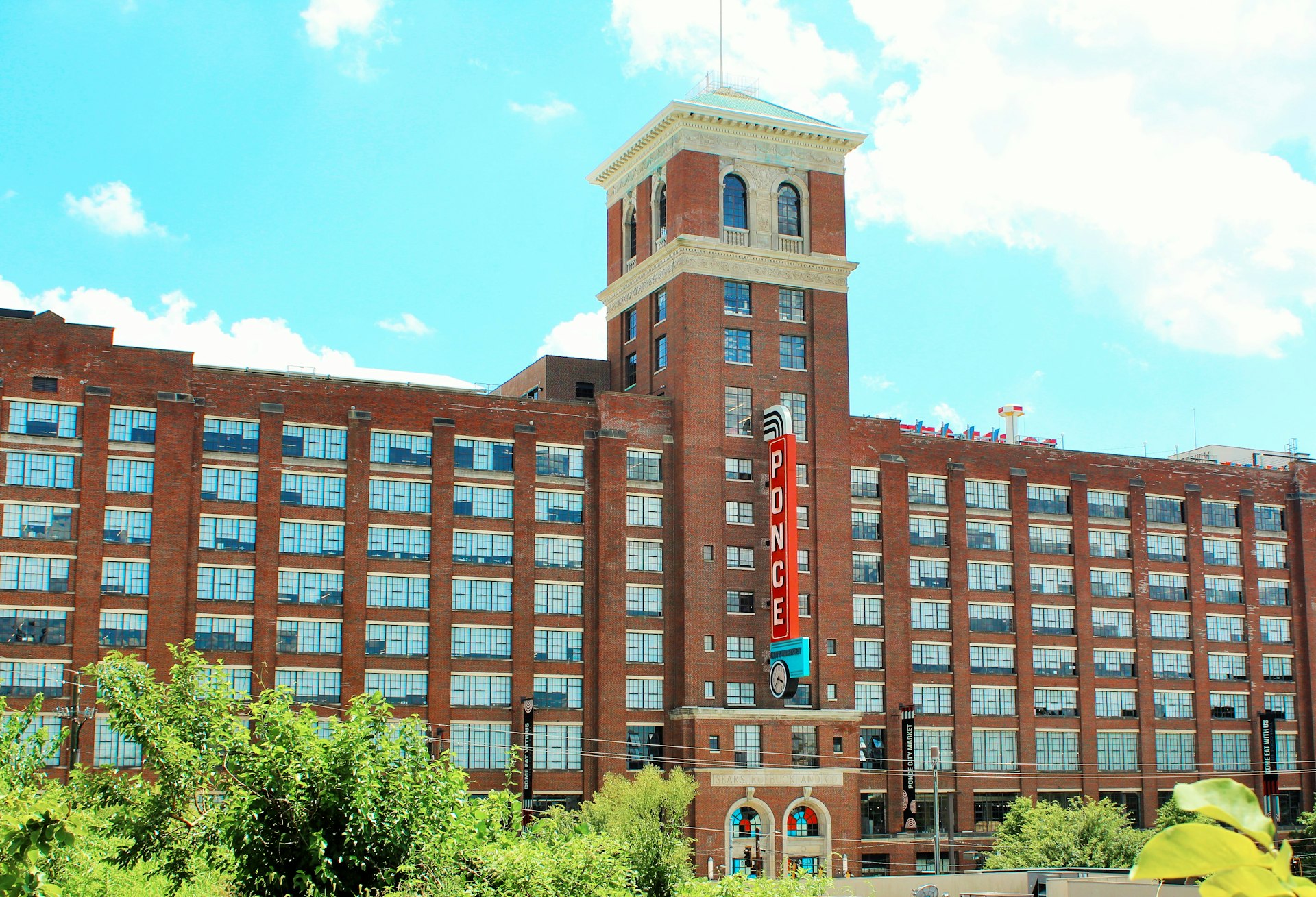
Cool off at Historic Fourth Ward Park
Behind Ponce City Market, this 17-acre below-ground-level park was one of the BeltLine's first projects. It features a playground, an outdoor theater, a stormwater retention pond that feeds the park's fountains and splashpad, and a skate park partially funded by skateboarding legend Tony Hawk.
It comes with an interesting history as well: the site was once home to an amusement park, casino and ballpark, and people believed Clear Creek, which runs under the park, had therapeutic qualities. But Sears, Roebuck and Co buried it all when it built its massive brick headquarters in 1926 (now Ponce City Market).

Relax like a local at Piedmont Park
Piedmont Park, Atlanta's largest green space, is a pristine, 185-acre urban oasis in the middle of Midtown that has it all, from history (Atlanta's first professional baseball team, the Atlanta Crackers, played in the park from 1902–04) to numerous music and cultural festivals to bars, breweries and big-ticket attractions such as the Atlanta Botanical Garden. But it works just as well as a place to picnic, go for a run or bike ride, or tuck away under a tree for an afternoon nap.
Located in the northwest corner of the park on 30 acres, the Atlanta Botanical Garden features a Japanese garden, winding paths and the amazing Fuqua Orchid Center.
Get wild at Clyde Shepherd Nature Preserve
Smack in the middle of the city (well, OK – out in Decatur, but you get the idea), you'll find this 28-acre nature preserve, home of beavers, foxes, box turtles, red-spotted newts, coyotes and veritable clouds of birds. It's a welcome slice of wilderness in the heart of an enormous urban area.

Spend the day in Centennial Olympic Park
Hopping from museum to museum around the big-attraction-concentrated Olympic legacy, Centennial Olympic Park, makes for a near-effortless big day out.
You can drink yourself silly on international sodas inside the World of Coca-Cola, get a history lesson at the Center for Civil and Human Rights, lurk near your favorite newscasters on a behind-the-scenes tour of the CNN Center, root for a college football team while romping through the College Football Hall of Fame or ogle graceful beluga whales inside the impressive Georgia Aquarium – without even breaking a sweat!
